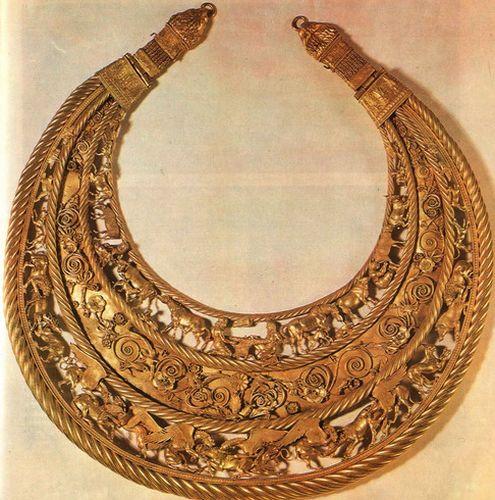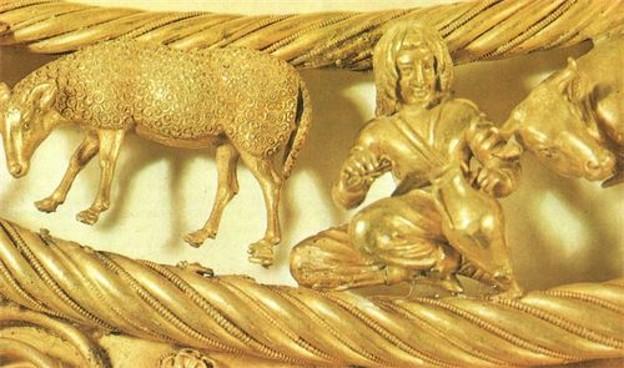
Try Amazon Fresh
Skythian Gold Pectoral from Tovsta Mohyla Kurhan, 4th Century BC

A larger image of this Skythian Gold Pectoral from Tovsta Mohyla Kurhan, 4th Century BC


Tovsta Mohyla. A large Scythian royal kurhan of the 4th century BC situated near Ordzhonikidze, Dnipropetrovsk oblast. It was excavated in 1971 by Borys Mozolevsky. He unearthed two burial vaults of Scythian nobles. The central vault had been looted, but the side vault, dating from the later period, was intact. The central vault contained remains of a Scythian nobleman; the side vault contained five skeletons, with the main ones belonging to a Scythian noblewoman and a child. The skeletons in the side vault were covered by a great number of gold ornaments and other artifacts. The treasure found at the Tovsta Mohyla kurhan, that included weapons, metal and clay vessels and artifacts, and over 600 gold objects and ornaments, is one of the richest archeological finds from that period. The most spectacular discover was a masterfully crafted gold pectoral, 30.6 cm in diameter, depicting scenes from Scythian daily life and animal motifs. Other important finds included a sword in a gold-decorated sheath and a gold female headdress. The collection is now housed at the Museum of Historical Treasures of Ukraine in Kiev.
Three semicircular friezes form the pectoral, filled with floral ornaments, numerous casts of gold images of people and animals. In the centre of the lower frieze are located images griffins attacking horses, and lion and a leopard attacking a deer and wild boar, dogs chasing hares, and, finally, two grasshoppers sitting opposite each other.
 |
 |
 |
In the top tier are placed images of scenes of the peaceful life of the Scythians. In the centre two Scythians, naked to the waist, sew a fur coat. Their bow cases have been put aside.
Noteworthy is one more detail - their faces and hair styles are so different that we can assume them representatives of different ethnic groups belonging to different tribes.
Referenced on p.23, Scythians 700-300 B.C. by E.V.Cernenko, A.McBride, M.V.Gorelik
The world-famous gold pectoral found in the royal burial at Tolstaya Mogila, dating from the 4th century, is reconstructed on our Plate G. This is an enlarged detail from the pectoral, showing two Scythians-their bows and arrows always close at hand-apparently dressing a fleece.

